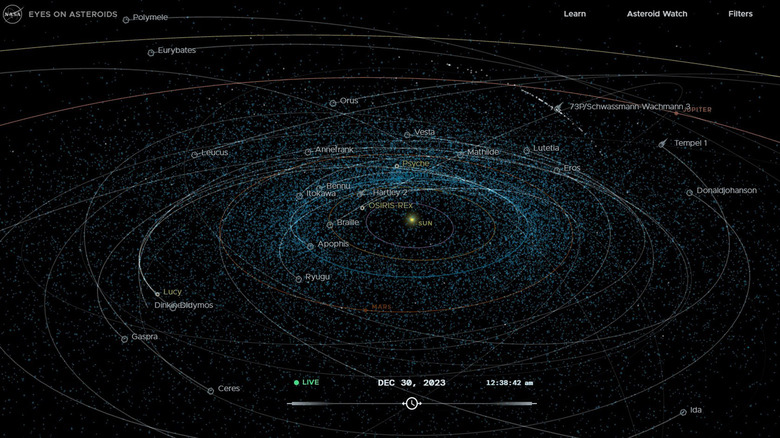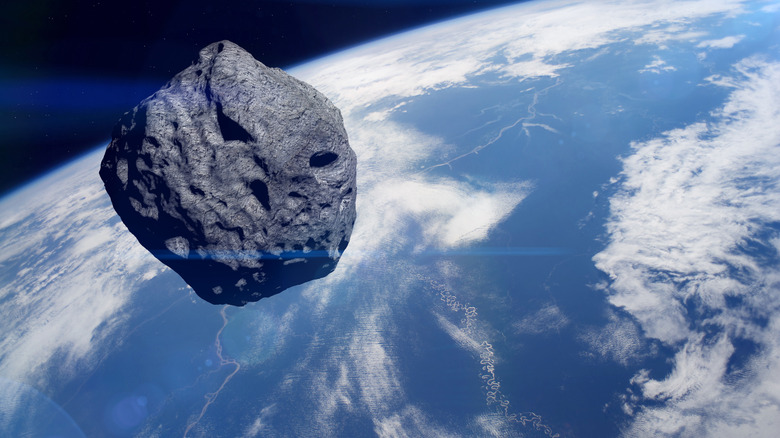Discover Space: This NASA Tool Lets You Track Asteroids And Comets In Real Time
NASA has been busy in the last few months with several asteroid-related missions. From bringing back the agency's first asteroid sample in the OSIRIS-REx mission to launching the Psyche mission to visit a metal asteroid, late 2023 has been an exciting time for asteroid fans.
There are thousands of known asteroids in our solar system, far more than the handful which are explored by the big missions. If you've ever been curious about a particular asteroid — whether it's one that comes close to Earth, called a near-Earth asteroid, or one which comes close enough to actually intersect with our planet's orbit, called a potentially hazardous asteroid, or even one which hangs out deeper in the solar system — then there's a NASA tool you have to check out.
Eyes on Asteroids is a web app that shows the location, in 3D and real time, of many of the asteroids which are located within the inner solar system. The app uses data from NASA's observations and allows you to click on an object to bring up more information about it, as well as tracking some asteroid-observing spacecraft and comets.
The app was released in 2021 and is easy to use. "We wanted Eyes on Asteroids to be as user-friendly as possible while telling the stories about humanity's exploration of these fascinating objects," said one of the developers, Jason Craig, technical producer of the Visualization Technology Applications and Development team at NASA's Jet Propulsion Laboratory. "Every NEO can be found inside the app, as can most of the spacecraft that have visited these objects."
Asteroids of note
While you're checking out the Eyes on Asteroid tool, there are some particular asteroids that you might want to find. There's Bennu, which is a loosely bound pile of rubble which was recently visited by NASA's OSIRIS-REx spacecraft. It was able to gently touch its sampler down onto the asteroid's surface and scoop up a sample. That sample was brought back to Earth and landed in the Utah desert in 2023, making it NASA's first sample collected from an asteroid.
There's also asteroid Ryugu, which, like Bennu, is a spinning top shape and classified as a near-Earth asteroid and a rubble pile type. It was visited by the Japanese Hayabusa 2 mission in 2018, which succeeded in bringing back a sample of the asteroid to Earth in 2020.
Psyche is an asteroid that will soon be visited by a NASA mission of the same name. The mission launched in 2023 and will visit this asteroid because of its off composition — thought to be mostly made of metal, rather than the primarily rock that most asteroids are made of. Then there's Apophis, which is famous because it was thought for a time that it might impact Earth in the future. However, more data revealed that the asteroid won't impact the planet, but it will make a close pass of Earth in 2029, giving scientists the opportunity to study it in more depth.
Finally, one more object that asteroid fans might want to check out is Lucy, which is not an asteroid but a spacecraft that is currently on its way to a series of asteroids. Launched in 2021, the spacecraft is visiting the Trojan asteroids in the orbit of Jupiter, which it will study to attempt to understand the formation of the early solar system.

